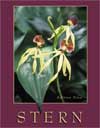1. Most of our food is derived from just a handful of plant species. 2. We domesticate plants by genetically altering them to meet our needs. 3. The impetus for the shift from hunter-gatherer to agricultural societies
is not clear. Current hypotheses are speculative. 4. Plant domestication began in the Near East approximately 10,000 years
ago and spread to Asia and then Africa and the New World. 5. During domestication, plants were selected for nonshattering seeds,
high yield, seedling vigor, and absence of seed dormancy. 6. Two methods for improvement of self-pollinated crops are pure-line
selection and selection within self-pollinated offspring of hybrid plants. 7. Two methods for improvement of cross-pollinated crops include mass
selection and creation of hybrids from inbred lines. 8. Germplasm banks are critical repositories of genetic diversity essential
for plant-breeding progress. 9. Protoplast fusion combines entire genomes of related plant species
that cannot mate with each other. 10. Transgenic plants contain DNA from foreign organisms. To make a
transgenic plant, a gene is spliced out of the donor and inserted into a vector.
The vector is inserted into a host, such as a bacterium, which clones the foreign
donor DNA. The next steps, transformation of the plant with the cloned foreign
gene and expression of that gene, are the most difficult ones to perform. 11. Seed propagation requires production of high-quality seed, an adequate
seed storage environment, and appropriate conditions for seedling growth. 12. Cuttings provide a method of asexual propagation for many plant
species. 13. Grafting unites pieces of two different, but related plants, and
can be used for cloning. 14. Another form of asexual reproduction utilizes natural propagules,
such as bulbs, corms, and tubers. 15. Micropropagation is an asexual propagation technique carried out
under sterile conditions. | 


 2003 McGraw-Hill Higher Education
2003 McGraw-Hill Higher Education